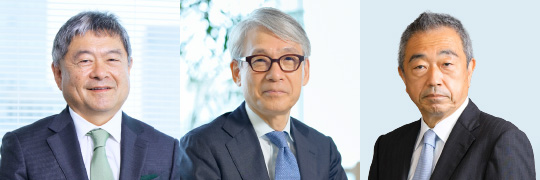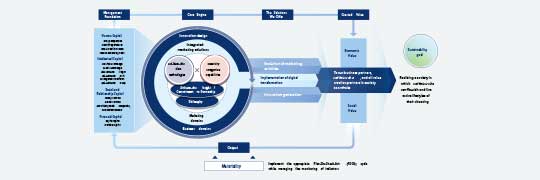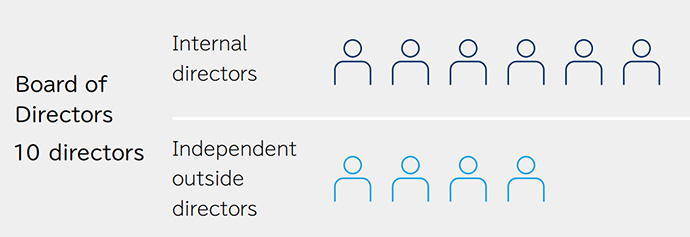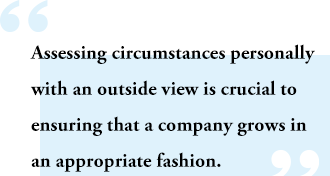Value creation is the true essence of a company.
The fundamental functions of a company are said to be marketing and innovation. For the Hakuhodo DY Group, our purpose is to help our clients with their marketing and innovation-related activities. Customer acquisition is the true essence of marketing, and market creation is the true essence of innovation.
Marketing and innovation work together to complement one another. To create markets, you need to first acquire customers. And to acquire customers, you need to first push the limits and create new markets.
The Group has adopted Sei-katsu-sha Insight as one of its policies. Under this policy we view customers as seikatsu-sha. There is also the notion of considering customers as consumers, and although this way of thinking is likely more common, we at the Hakuhodo DY Group do not view our customers simply as consumers.
Rather than viewing people simply as the targets of consumption, or consumers, we view them as sei-katsu-sha who can design their own lifestyles on their own accord. By doing so, we have come to know sei-katsu-sha better than anyone else. Using this knowledge, we come up with new ideas and express creativity in the best way possible. We refer to this approach as Sei-katsu-sha Insight, and it is an extremely valuable policy to the Group.
The other policy we value is Commitment to Partnership. This policy allows us to take on the issues of our clients from the standpoint of sei-katsu-sha and offer clients comprehensive solutions to these challenges, thereby creating long-term partnerships with them.
Viewing customers as sei-katsu-sha, our goal with these policies is to work together with our business partners to bring happiness to sei-katsu-sha.
Sei-katsu-sha wish for a society with safety and peace of mind. Sei-katsu-sha also wish for a society in which they can express themselves. Additionally, sei-katsu-sha wish for a sustainable society.
I mentioned previously that value creation is the true essence of a company. In the case of the Group, our value creation lies in our goal of realizing a society in which sei-katsu-sha can flourish and live active lifestyles of their choosing. We will realize this goal together with our business partners by drawing on creativity in the best possible way.
Next, let me talk about our stakeholders, who represent our partners in delivering the value we create.
As I stated before, sei-katsu-sha (and in a greater sense, society) and our clients are our most important partners in providing value. But these are not our only stakeholders. Business partners such as media companies, content holders, and producers are also important stakeholders.
Furthermore, our employees represent another extremely valuable stakeholder. As such, we adopt the policy of recognizing our people as our assets. We maintain this policy because we work in a service industry that centers on mental work. The minds of our employees are what allows us to produce ideas. For this reason, we place importance on employee satisfaction and are making particular efforts to respect individuality, develop personal creativity, and enhance our teamwork capabilities. These efforts ultimately help us improve our level of customer satisfaction.
Also, our most important stakeholders are our shareholders and other investors. Leveraging their investments, we aim to consistently enhance corporate value. Going forward, we will continue to make concerted efforts to meet the expectations of our shareholders and other investors.








